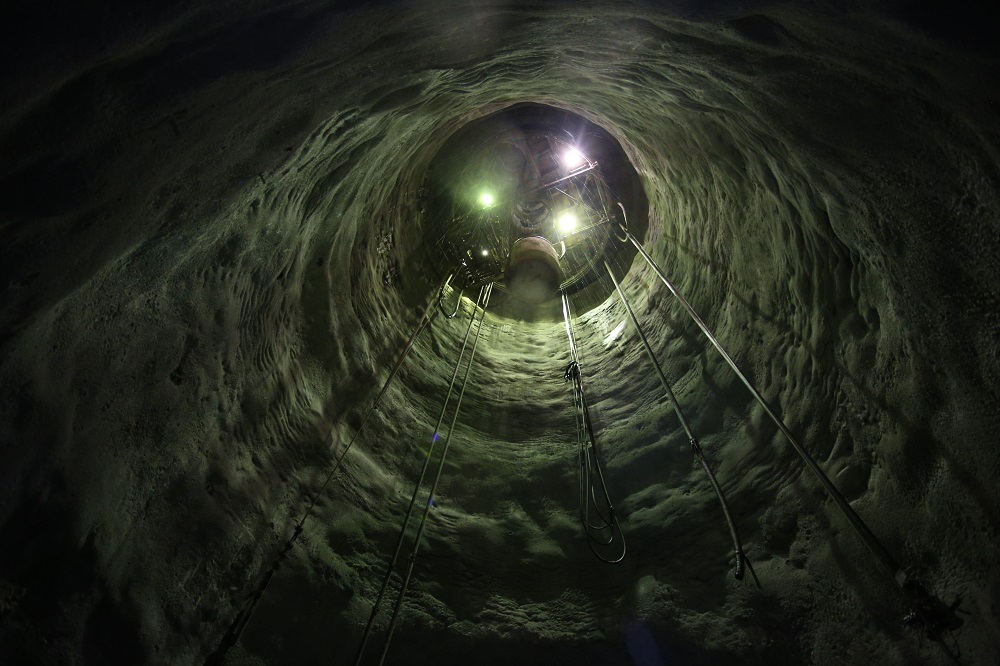Russia-based Norilsk Nickel is actively implementing its Technology Breakthrough programme and is seeing significant returns when it comes to exploration and operations knowledge, Sergey Dyachenko told IM earlier this week ahead of the company’s Capital Markets Day in London.
While the programme, which started in 2014, aimed to digitise and automate most processes at the company’s extensive mining and processing facilities by 2020, Norilsk’s Chief Operating Officer said increasing the company’s exploration knowledge was a fundamental aim.
“We spent a substantial amount of money, time and expertise to get the best understanding of what our mineable reserve is,” he said. The company has now taken this fully-digitised dataset and put it into a 3D environment, where geologists, mine planners and engineers can analyse and interpret where the company may look to explore, drill, develop or mine next.
This is having a knock-on effect across the group, according to Dyachenko.
“The further we move with resource knowledge, the more precise figures will go into our strategic plan,” he said.
He talked about the company moving from longer-term planning scenarios to hourly planning with the help of an underground automated dispatch system and simulation models that could be run as regularly as every month.
After successful trials at one of the company’s mines, simulation models have been developed for every operation and are now in use for regular mine planning in order to confirm operating drivers, he said, adding that the vendor could launch this programme commercially in the next few years.
These investments have been bolstered by a new data centre platform and enterprise data network, and the installation of 956 km of high-speed fibre cable to its main Norilsk hub in Russia.

Norilsk is a city in Krasnoyarsk Krai, located above the Arctic Circle, where the company has been mining nickel, copper, cobalt and platinum group metals for several decades. The mineral-rich region has played a big role in the company becoming and retaining its position as the largest high-grade nickel and palladium producer in the world.
These technology developments should allow the company to improve transparency at its underground mines and speed up operational changes and maintenance, according to Dyachenko (pictured, left).
“By mid-next year, we will have all of our processes – not just loading and hauling – in a real-time environment,” he said.
Moving maintenance procedures into real-time and predictive mode, plus transitioning from a paper-based to electronic metal accounting system were two of the other aims of the Technology Breakthrough programme, he added.
Automation and electrification
The company is to continue spending on what it calls “advanced digital technology”, with some $80 million set aside for 2018 to 2021.
From January 1, SAP’s enterprise resource planning software will have been rolled out across all production sites for improved productivity, and sensor equipment (such as bucket teeth monitoring on excavators) will also be installed at key operations.
Pilot projects in computer vision, robotics and data mining will also progress, while exploration projects using drones and other airborne surveillance tools are being weighed up.
“In all of our operations, we look at the opportunities to use artificial intelligence and big data, end-user analysis and preventative maintenance,” Dyachenko said, adding that the drivers for these were around safety, productivity, operational performance and cost efficiencies.
And, as is becoming commonplace across the mining space, Norilsk is looking into bringing greater means of automation into future underground operations.
“Currently, we have a vision to introduce a fully-automated mine,” he said.
The first candidate for such a shift is likely to be the Skalisty nickel-copper-PGM underground project (pictured) at the company’s Polar Division, Norilsk’s key production asset located on the Taimyr Peninsula.
The project is currently commissioned at an operating capacity of 700,000 t/y and is expected to be ramped up by an additional 1 Mt/y by 2021. The overall target capacity is 2.4 Mt/y and the total capital expenditure (2013-2020) will amount to $2 billion.
Dyachenko said the company was in the process of finishing the shaft sinking and lateral development work and, after completion, would start to look at how to utilise new technologies to automate operations.
The development of Skalisty, the deepest mine in Eurasia at more than 2,000 m depth, according to Norilsk, could also see the company introduce battery-electric equipment, according to Dyachenko.
While the company has not yet identified a specific piece of battery-powered equipment for the task, Dyachenko said the company was already analysing how it could accommodate such loading and hauling machinery into operations.
“Those technologies don’t provide a continuous operation for extensive periods of time and we will have to take this into account,” he said, explaining that the mine plan will need to incorporate battery re-charging or change-out approximately every five hours.











